Why are small business so successful? They excel at customer loyalty. Small businesses are able to recognize their customers. Small businesses know their customers by name and can personalize orders. Small businesses can’t rely on repeat customers. It is important to continue to increase your customer base, but they might not know how or have the resources.
Small businesses must understand how to acquire clients in a cost-effective and efficient manner. The first step in measuring acquisition is to start tracking it. Only about 5 out of 10 companies monitor their customer acquisition and even fewer track lifetime value. Understanding customer relationship management, marketing, sales and customer service is necessary to achieve growth and make the transition from a small business startup into a sustainable one.
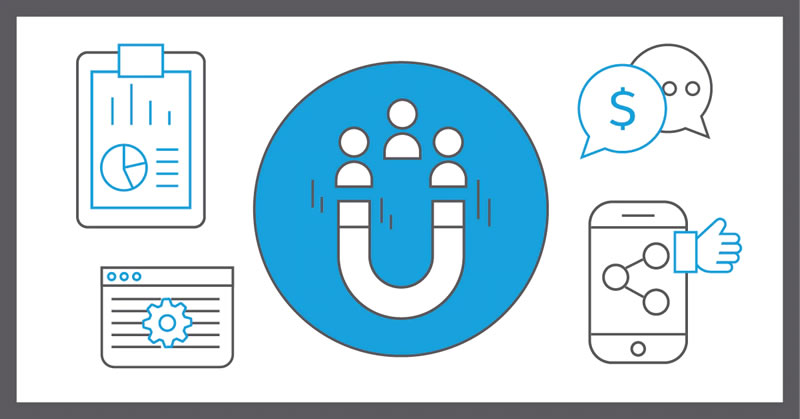
Customer acquisition is the process of finding customers for a growing small business. Small business owners often lack the resources or time to develop a comprehensive customer acquisition strategy. However, when they invest the time and effort to research the best strategy to suit their business, they will see renewed growth.
Definition of Customer Acquisition
According to current trends, 76% customers expect that companies will understand their needs . Small businesses must have a well-organized strategy for acquiring customers to keep up with the demands of today’s consumer. Customer acquisition is the act of acquiring customers that are willing to buy your products or service. Customer acquisition is usually the first thing that falls under the marketing department, since it starts at the top. Marketers need to show that they understand their customers’ expectations and are ready to deliver. Sales picks up the conversation as leads move through the funnel. Marketing and sales have a common goal: to acquire new customers. They use metrics to guide their efforts.
Metrics are only valuable if you use them. only 58% of marketers track customer acquisition rates, and barely over half of marketing departments measure customer acquisition costs. There’s a great opportunity for companies to improve their customer acquisition efforts by better measuring, tracking, and increasing success.
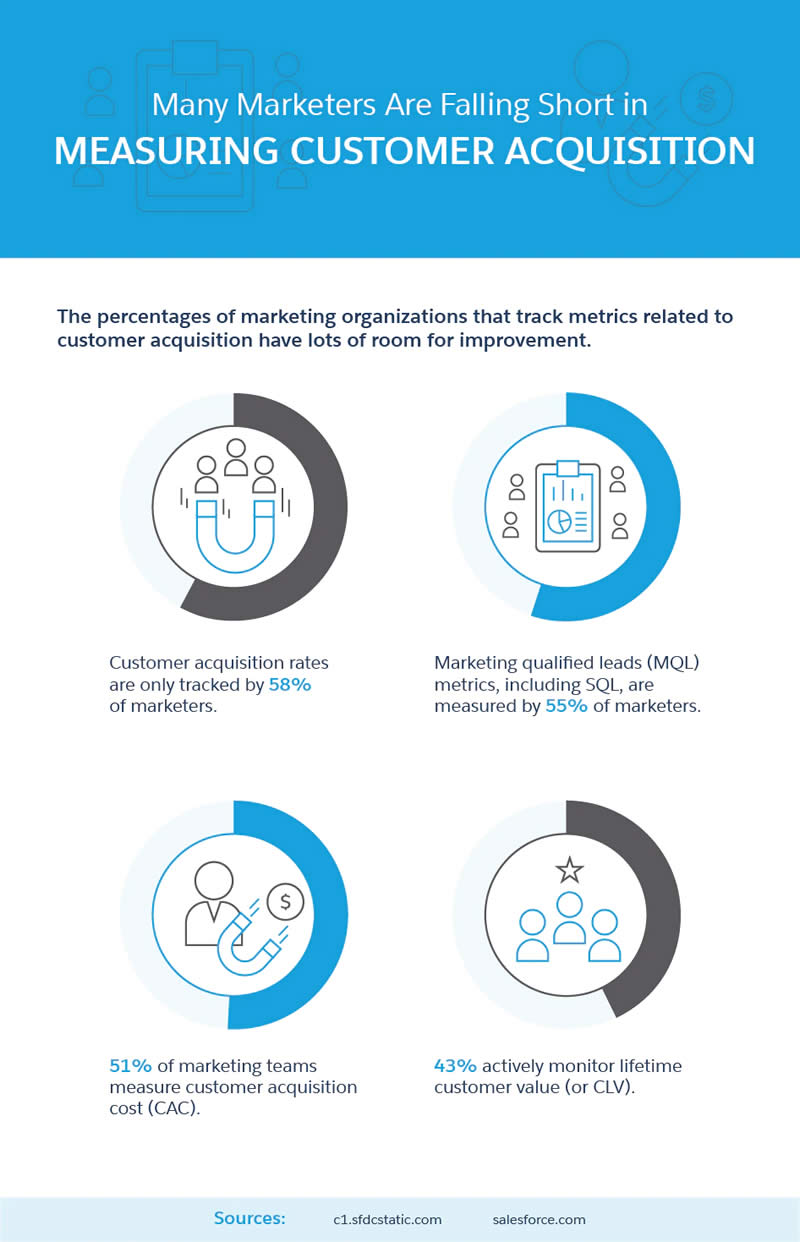
What is Customer Acquisition? What are the metrics and terms to know?
What is the real meaning of acquiring customers? And how do terms such as “demand generation” or “lead-generation” fit into this picture?
Demand Generation is the process of reaching out to a large audience through various marketing channels in order to increase their interest or curiosity about your brand, company, products or services. Demand generation is an essential part of acquisition and retention. It occurs at every stage in the customer journey, from being a disinterested person to a brand enthusiast. Demand generation for Apple’s latest iPhone, for example, can target both iPhone users who have smartphones from Apple’s competitors and iPhone enthusiasts who may be on the fence regarding upgrading.
Lead generation is an aspect of demand creation. It refers to identifying and contacting potential customers that your marketing team has identified as “leads”. A lead is created when you create enough interest in your product or service to get a consumer to take action. You can generate leads by offering an industry-specific e book for free download in exchange for the visitor’s e mail address.
These terms are important for business owners to understand and know, but they pale in comparison to the idea of creating a strategy to acquire customers. Customer acquisition is an umbrella term for all the steps you take to find and convert new customers. Lead generation and demand-generation strategies are both included in the umbrella term of customer acquisition. Your marketing and sales departments and, sometimes, your customer service department are also included.
Examples Of Customer Acquisition Techniques
Think about the marketing and sales tactics you have used in the recent past to get a better idea of customer acquisition. These strategies are used for customer acquisition. These are some of the most popular forms of customer acquisition:
– Creating a website that showcases your products and services
Create pages for social media to promote your business
– How to create a Google Ads Campaign
Attending a local business show
– Calling prospects to arrange sales meetings
Direct mail
– Requesting referrals
Even cold-calling people you have never met is considered customer acquisition. Small businesses often make the mistake to try a variety of marketing and sales techniques without having a strategy in place or assessing their results. Some businesses continue to use the same marketing and sales tactics, even as response rates decline.
It’s not about trying out every possible customer acquisition strategy. Improving your customer acquisition process is the key. It all starts with a clearly defined and organized strategy for customer acquisition.
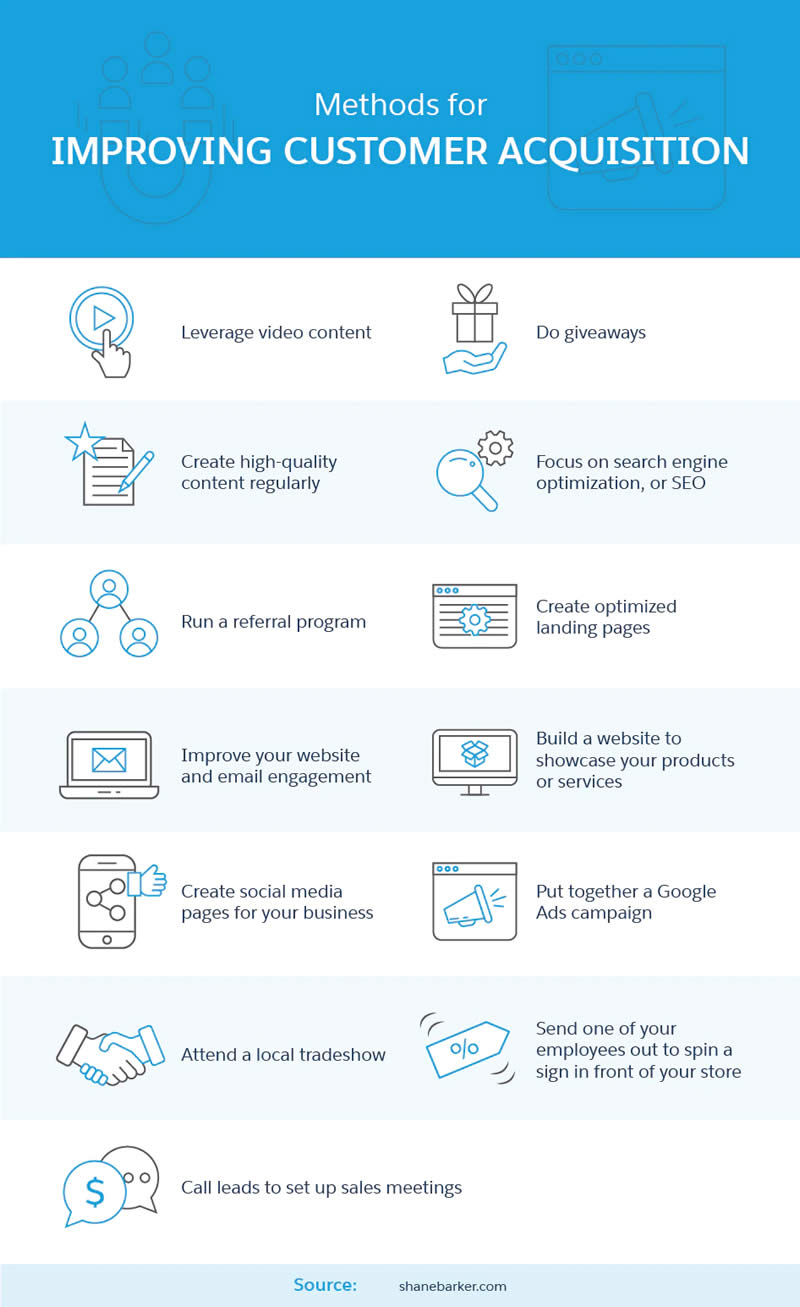
How to create your Customer Acquisition Strategy
Instead, create your customer acquisition strategy by following these simple steps:CLICK TO TWEET Create your customer acquisition strategy using these simple steps.
Step 1: Identify your customers
Who are your customers, exactly? It may seem like an easy question, but did you write it down? Or have you challenged your assumptions about this answer? Create detailed personas or profiles of your ideal customer to help you start your customer acquisition strategy.
Consider the following data points:
– Gender
Age
Location
– Earnings
– Hobbies
– Values
Life Stage
Habits
You can also do this if you are a B2B business. Focus on the industries, their needs, their size, budgets and other factors. You will probably identify several customer profiles during this process. This is great. It allows you segment profiles, so that you can tailor your acquisition strategy to each type of persona.
Learn more about creating and identifying personas in “Personas: Understanding the Person Behind The Visit.”.
A local remodeling company, for example, may be used working with boomers who want to perfect their “forever homes”. After reviewing past bids and its most recent customers, the company realized that millennial couples with dual incomes are very interested in upgrading their homes.
Step 2: Understanding the buyer journey
It’s now time to design and research a buyer journey to achieve your goals. Here’s where your sales and marketing teams can shine. Find out the best way to communicate with your audience and guide them through each stage of the buyer journey.
– Awareness
Consideration
– Decision
There are many marketing tactics that work. You should test different marketing tactics and use metrics to measure their success. Learn more about the buyer’s journey and the sales cycle in this infographic : “Understanding Buyer’s Journey through the Sales Cycle.).
Step 3: Nurture Your Leads
It’s time to put your sales team to work when you have warm leads – those who have moved from marketing qualified leads to sales qualified lead. Nurturing leads is about building a personalized, authentic relationship with customers most likely to convert. This begins with marketing and continues with sales. This could be a variety of tactics – from a presentation and sales call to a customized coupon based on a customer’s website browsing history.
Learn more about lead nurturing by reading this article: What is Lead Nurturing?
Step 4: Assess, Assess, Assess
Knowing where your customers are from is essential to determining which marketing and sales strategies work and how well. You can then decide where to spend your resources and money.
Online marketing campaigns can be assessed more easily than ever before. You can track how many people have clicked on your Facebook ads, downloaded your e book, or watched your video on YouTube. can track visitors as they move around your site, giving you a better understanding of where and how people are likely to convert.
Do not be afraid to ask your customers how they found you. When you meet them, ask. It is an excellent way to identify your best sources of referrals.
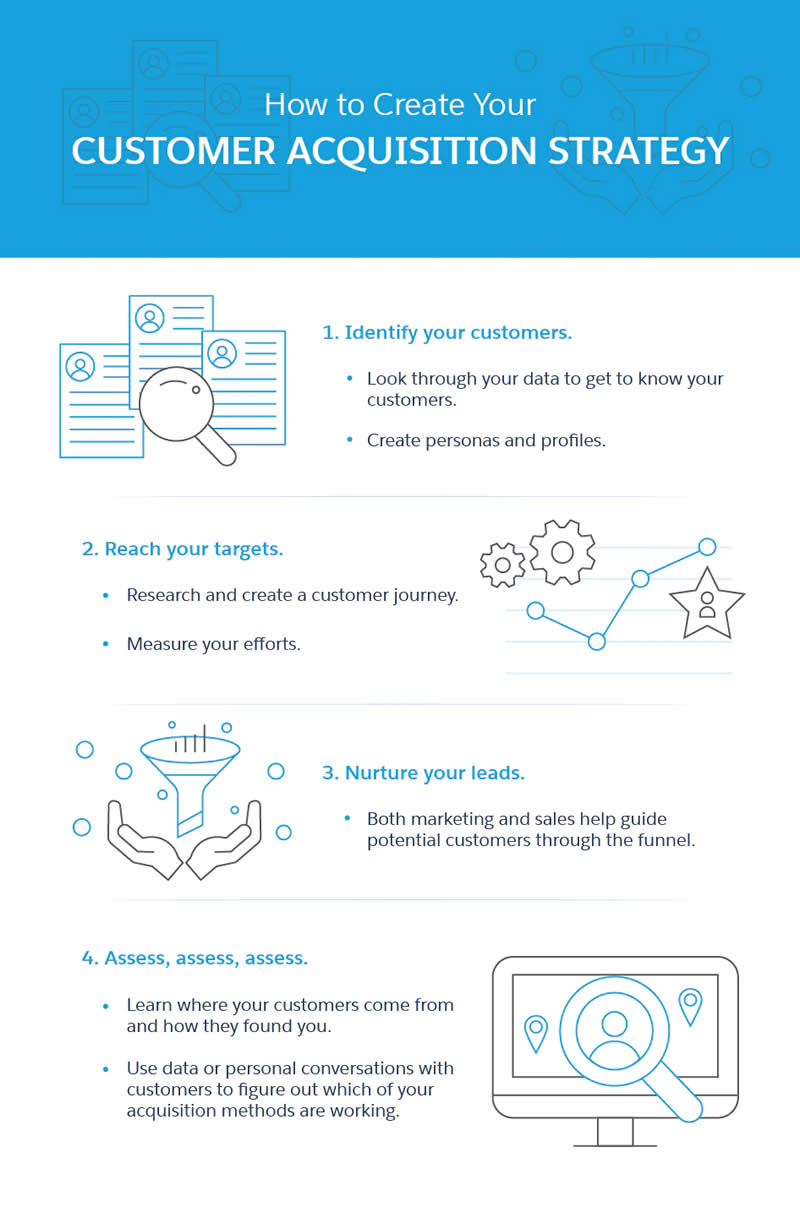
Why you need to establish your customer acquisition cost
Increased customer acquisition is a boon for your business, as long as it doesn’t cost you more to acquire customers than the profits they generate. You need to know your CAC, or customer acquisition costs, to ensure you are making money.
The CAC is exactly what it sounds like: the amount of money you spend to attract new customers. Add up your marketing and sales expenses over a period of time, or for a particular campaign. This can include advertising, event fees and printing costs, as well as client visits. Divide this result by the total number of new clients your business has gained in that period. You will then have your CAC.
CAC is not very useful if you do not know what your customers are worth. Let’s not get into acronym overload. We can also discuss customer life-time value (CLV). This is the amount of profit that the average customer generates.
CLV is more than just a single sale. It estimates how much money your typical customer will spend on you over the course of your relationship. A couple that uses your remodeling service to do a small bathroom remodel may return in five years with a request for a complete kitchen remodel.
You can’t calculate an exact CLV because you don’t know exactly what each customer will buy or for how long. By collecting data over time you can identify trends, and then use this to predict an average CLV.
You can compare your cost of customer acquisition to your lifetime value for each customer to ensure you are not overspending on new customers. You can also determine which marketing strategies give you the highest return on your investment (or ROI to use another acronym).
Investing in Customer Acquisition Software
It is important to be organized and track and evaluate a lot of information. Spreadsheets are not the best tool for this task. Invest in robust software that will guide you through the entire process.
Customer acquisition software today can automate large parts of your acquisition campaigns. The software may include marketing and sales platforms that are integrated with a central CRM solution. This gives teams an unified view of customers and leads. This technology allows you to segment your audience, create specific buyer journeys and send communications tailored to the lead’s behavior. These platforms also provide dashboards and reports that help you determine your CAC, CLV and remind you to call a client who needs to be contacted.
Small businesses can operate a sophisticated strategy for customer acquisition that will bring in more customers with less time, money and effort. Instead of throwing everything at the wall to see what sticks, adopt a data-driven strategy that is backed by automation.
____________________________________
Jessica Bennett is a novelist, writer, and editor. She has written for a variety of clients in a range of industries. Her work includes blog posts, product description, articles, press releases, white papers and more. Avalon is her VP for Morale and she’s proud of being Inbound Certified. However, Avalon doesn’t understand the hype. You can’t blame him, though. He’s a bunny.
This article first appeared at www.salesforce.com/solutions/small-business-solutions/resources/small-business-customer-acquisition and is re-published here with permission.





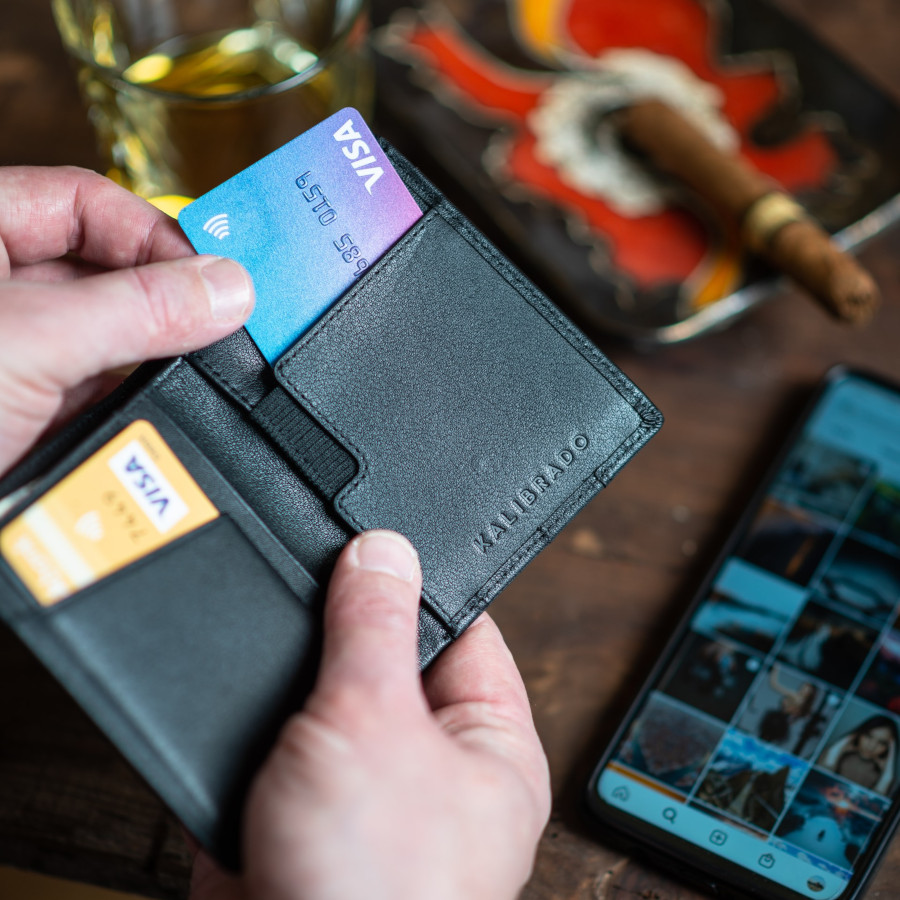

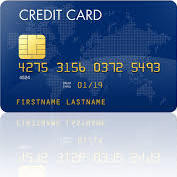
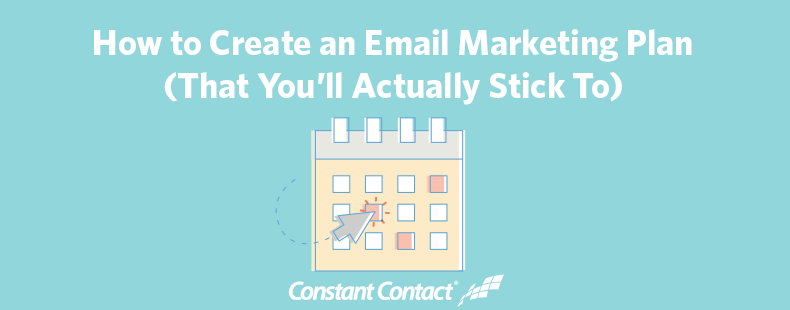
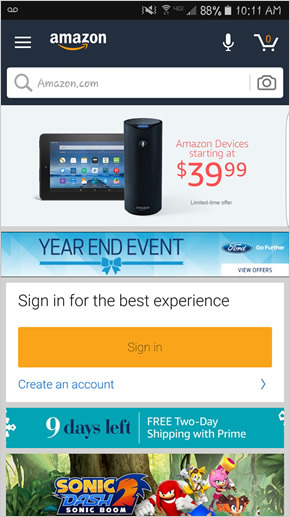


Leave a Reply